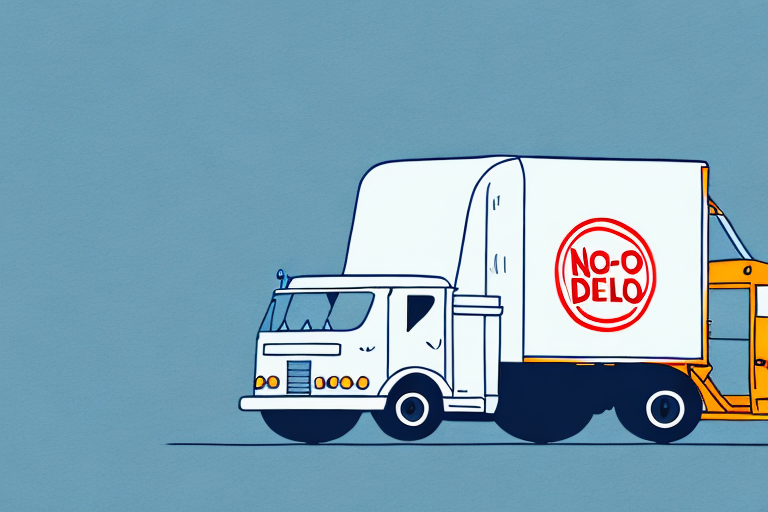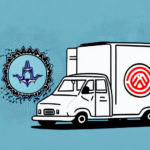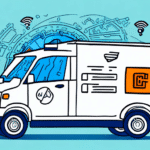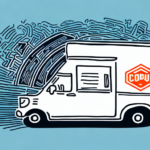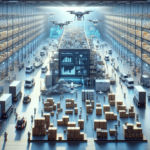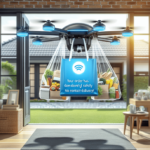What Does 'No Contact Delivery' Mean? Exploring the Benefits and Risks of This Delivery Option
With the ongoing COVID-19 pandemic accelerating the shift to online sales, the demand for contactless delivery has surged significantly. No contact delivery is a service option that allows consumers to receive their orders without direct interaction with the delivery personnel. This article delves into the rise of no contact delivery, its operational mechanisms, the benefits and potential risks it presents, and how to ensure a safe and secure delivery experience.
The Rise of No Contact Delivery Services: A Brief History
Prior to the pandemic, no contact delivery was a niche service, predominantly offered by select businesses such as pizza chains. However, the onset of COVID-19 drastically changed consumer behavior, increasing the demand for contactless options across various industries. This shift compelled many businesses to adopt no contact delivery, transforming it from a rare option to a mainstream service.
The primary driver behind the popularity of no contact delivery is safety. As concerns about virus transmission persist, consumers seek ways to minimize exposure risks. No contact delivery enables customers to receive their orders without face-to-face interactions, thereby reducing potential transmission vectors.
Convenience also plays a crucial role in the adoption of no contact delivery. Customers can place orders online or through mobile applications and have their purchases delivered directly to their doorstep, eliminating the need to leave their homes. This is particularly beneficial for individuals with busy schedules, the elderly, or those with disabilities.
According to a Statista report, the adoption of contactless delivery services increased by over 50% in 2023 compared to the previous year, highlighting its growing acceptance and reliance.
How Does No Contact Delivery Work? A Step-by-Step Guide
1. Placing an Order
Customers initiate the process by placing an order online or via telephone, selecting the no contact delivery option, and completing the payment through secure online methods.
2. Order Preparation
Once the order is confirmed, the business prepares the items for delivery, ensuring they are securely packaged to prevent contamination and damage during transit.
3. Delivery Process
The delivery personnel transport the order to the customer's specified address. Upon arrival, they place the package at the designated drop-off location, notify the customer through a phone call or app notification, and then depart without requiring a signature or direct handover.
4. Confirmation
Customers may receive a digital confirmation, often accompanied by a photo of the delivered package at the drop-off point, ensuring transparency and security in the delivery process.
By minimizing physical interactions, no contact delivery significantly reduces the risk of spreading infectious diseases like COVID-19. This is particularly crucial for immunocompromised individuals and the elderly, who are more vulnerable to severe illness.
Good hygiene practices remain essential even with no contact delivery. Consumers should sanitize their hands after handling packages and discard any unnecessary packaging materials. Delivery personnel are advised to wear personal protective equipment (PPE), including masks and gloves, and sanitize their delivery vehicles regularly.
Contactless Delivery vs Traditional Delivery: Which is Safer?
Contactless delivery is generally considered safer than traditional delivery methods in terms of reducing virus transmission risks. By eliminating direct contact between the delivery person and the customer, the likelihood of spreading infectious agents diminishes significantly.
However, certain deliveries, especially those involving large or heavy items, may still require some level of interaction. In these cases, maintaining a safe distance and using protective gear is paramount to minimize exposure risks.
The safety of contactless delivery also depends on the hygiene practices of the delivery service. Reliable providers adhere to strict safety protocols, including regular sanitization of delivery vehicles and equipment, and ensuring that delivery personnel are equipped with appropriate PPE.
Studies, such as those published in the Journal of Public Health, have shown that contactless delivery significantly lowers the risk of COVID-19 transmission compared to traditional delivery methods.
Benefits of No Contact Delivery: Convenience, Safety, and More
1. Enhanced Convenience
No contact delivery allows customers to order from the comfort of their homes, offering flexibility and saving time. The ability to schedule deliveries at preferred times further enhances user experience.
2. Increased Safety
By reducing physical interactions, no contact delivery minimizes the risk of transmitting infectious diseases, providing peace of mind to both customers and delivery personnel.
3. Environmental Impact
Efficient delivery processes, such as consolidated drop-offs, can reduce the carbon footprint by decreasing the number of delivery trips and optimizing routes.
4. Flexibility in Payment
Contactless payment options, including digital wallets and online transactions, streamline the payment process and reduce the need for handling cash.
According to the GlobalData report, businesses adopting no contact delivery have seen a 30% increase in customer satisfaction and a 20% boost in repeat orders.
Potential Risks of No Contact Delivery: Fraud, Theft, and More
1. Fraudulent Deliveries
There is a risk of fraudulent delivery attempts, where unscrupulous individuals may claim to have delivered packages they never actually did.
2. Package Theft
Leaving packages unattended at doorsteps increases the risk of theft, especially in areas with high crime rates.
3. Package Damage
Without direct oversight, packages may be mishandled or placed in unsuitable locations, leading to potential damage.
4. Misdelivery
Incorrect placement of packages can result in deliveries to wrong addresses or overlooked drop-off points, causing inconvenience and frustration for customers.
To mitigate these risks, it's advisable to use secure drop-off locations, opt for delivery services that provide real-time tracking, and choose providers with robust security measures in place.
Research from the FBI highlights the importance of security protocols in reducing package theft and fraud in delivery services.
What to Expect When Opting for No Contact Delivery
When selecting no contact delivery, customers should anticipate a streamlined process that prioritizes safety and convenience. Delivery personnel will drop off packages at the designated location without requiring direct handover.
Deliveries typically involve the use of digital confirmation methods, such as app notifications or photos of the delivered package, ensuring transparency. Customers should also expect delivery personnel to adhere to hygiene standards, including wearing masks and gloves during the delivery process.
Some delivery services may require specific instructions for drop-off points, such as a particular side of the house or a secure locker. Familiarizing yourself with these requirements can help ensure a smooth delivery experience.
It's recommended to communicate any special instructions clearly through the ordering platform to avoid confusion and ensure the package is placed in a secure and convenient location.
How to Ensure a Safe and Secure No Contact Delivery Experience
1. Use Secure Payment Methods
Opt for contactless payment options like credit cards, Apple Pay, or Google Wallet to minimize the exchange of cash and reduce handling of sensitive information.
2. Provide Clear Delivery Instructions
Specify exact drop-off locations, such as behind plants or in designated delivery boxes, to ensure packages are left safely and are less prone to theft.
3. Monitor Delivery Status
Track your orders in real-time to stay informed about the delivery progress and address any issues promptly.
4. Sanitize Packages Upon Arrival
Clean packages with disinfectant wipes before handling them to maintain hygiene and safety.
5. Choose Reputable Delivery Services
Select delivery providers known for their reliability and adherence to safety protocols to ensure a secure delivery experience.
Implementing these practices can significantly enhance the safety and security of no contact deliveries, providing peace of mind for both customers and delivery personnel.
Popular Businesses Offering No Contact Delivery Options
In response to the increased demand, numerous businesses have embraced no contact delivery. Major players include:
- Amazon - Offers comprehensive contactless delivery options through Amazon Prime Now and Amazon Fresh.
- DoorDash - Provides "Leave at Door" delivery preferences for food and grocery orders.
- Postmates - Implements contactless delivery instructions to enhance safety.
- Instacart - Facilitates contactless grocery deliveries with real-time tracking.
- Grubhub - Enables no contact delivery for food orders from a wide range of restaurants.
Additionally, many local restaurants and grocery stores have adopted no contact delivery to cater to customers seeking safer delivery options. These businesses often integrate contactless payment methods, further reducing physical interactions during transactions.
The adoption of no contact delivery by both large corporations and local businesses underscores its effectiveness and the evolving preferences of consumers towards safer and more convenient delivery solutions.
How COVID-19 Has Impacted the Demand for No Contact Delivery Services
The COVID-19 pandemic has been a pivotal force in transforming delivery services globally. With lockdowns and social distancing measures in place, consumers increasingly turned to online shopping and delivery services to meet their needs without leaving their homes.
This shift led to a remarkable increase in the demand for no contact delivery services. Businesses swiftly adapted to this change by enhancing their delivery infrastructures, investing in technology for better order tracking, and training staff to adhere to safety protocols.
The surge in demand also spurred innovation within the delivery industry, leading to the development of advanced logistics solutions, such as automated sorting systems and AI-driven route optimization.
However, the heightened demand has also presented challenges. Some delivery drivers have reported breaches in safety protocols, and the increased use of single-use packaging has raised environmental concerns. Balancing safety with sustainability remains a critical issue as the industry continues to evolve.
According to the The Economist, the pandemic accelerated the adoption of contactless delivery by over two years, establishing it as a permanent fixture in the delivery landscape.
The Future of Food Delivery: Will No Contact Delivery Become the Norm?
The future of delivery services is likely to be shaped by the persistent changes in consumer behavior triggered by the pandemic. No contact delivery is poised to remain a standard offering, given its demonstrated benefits in safety and convenience.
As technology continues to advance, we can expect further enhancements in delivery logistics, such as the integration of autonomous delivery vehicles and drones, which will further minimize human contact and improve delivery efficiency.
Businesses are also exploring sustainable practices within no contact delivery frameworks, aiming to reduce the environmental impact by optimizing packaging and delivery routes.
Consumer preferences are increasingly leaning towards flexible and secure delivery options, suggesting that no contact delivery will not only persist but also evolve to meet broader expectations of safety, speed, and sustainability.
Market forecasts from McKinsey & Company indicate that no contact delivery could account for over 60% of all delivery services by 2025, solidifying its role in the future of logistics.
Tips for Choosing the Right No Contact Delivery Service Provider
Selecting a reliable no contact delivery service involves several critical considerations to ensure a secure and satisfactory delivery experience:
1. Reputation and Reliability
Choose providers with strong reputations for reliability and consistency. Reading customer reviews and ratings can provide insights into the service quality and reliability of the delivery provider.
2. Safety Protocols
Ensure the delivery service adheres to strict safety measures, including the use of PPE by delivery personnel, regular sanitization of vehicles, and compliance with health guidelines.
3. Technology and Tracking
Opt for services that offer real-time tracking and notifications, allowing you to monitor the status of your delivery and receive timely updates.
4. Delivery Options and Flexibility
Look for providers that offer flexible delivery options, such as scheduled deliveries, specific drop-off locations, and the ability to modify delivery instructions post-order.
5. Customer Support
Reliable customer support is essential for addressing any issues or concerns promptly. Choose services that offer robust customer support through multiple channels.
6. Environmental Practices
If sustainability is a priority, select delivery services that implement eco-friendly practices, such as using recyclable packaging and optimizing delivery routes to reduce carbon emissions.
By carefully evaluating these factors, consumers can select no contact delivery services that best meet their needs, ensuring a secure, efficient, and pleasant delivery experience.













